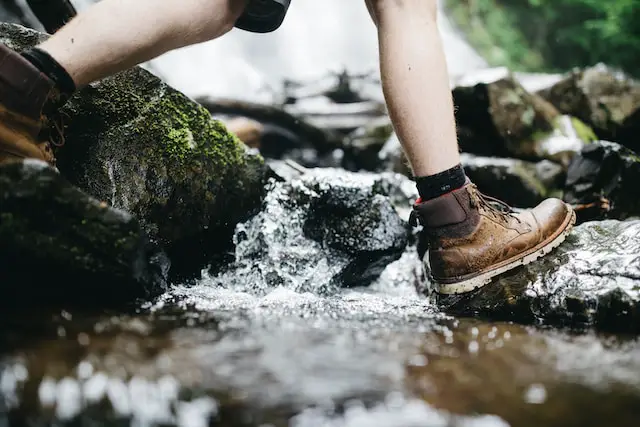There’s nothing like the thrill of a good hike, but what happens when the unexpected strikes? From nasty sunburns to inconvenient blisters, dehydration, or even a sprained ankle – these common hiking problems can turn a great day out into a disaster. This guide will help you be prepared.
1. Sunburn
You forgot to apply enough sunscreen during your hike, and now your skin is beet-red and stinging with every touch. This is why it’s important to wear plenty of sun protection while you’re exploring the great outdoors, including sunscreen with a high SPF, sunglasses with UV protection and a wide-brimmed hat. This setup becomes increasingly clear if you plan on hiking along a shore line such as Pictured Rocks in Michigan or the Indiana Dunes National Lakeshore.
What can you do to treat your sunburn on a hike? Hopefully, you’ve packed a first aid kit in your backpack. Take an ibuprofen or aspirin from your first aid kit to reduce swelling. Apply a generous layer of moisturizer with aloe to soothe the burn.
If you can take a break during your hike to wait for the sun’s rays to get less intense, you should do that. According to the Environmental Protection Agency, the sun’s rays are strongest between 10: 00 am and 4:00 pm. So, if it’s 3:00 pm, give yourself a nice long break in the shade and get back to the trail when the sunshine is a little dimmer.
2. Blisters

Blisters can make a pleasant hike turn bad. Every step can become a pain. So, what can you do if you feel a blister sprouting on your foot when you’re halfway down the trail?
Pack some blister remedies like bandages or blister-prevention tape. When you feel a “hot spot” forming on your foot, apply the bandage or tape over it. You should also pack clean pairs of wool socks in your bag. Damp socks can cause foot blisters. So, if you notice that the socks you are wearing are damp, you should swap them out for a fresh pair.
3. Dehydration
It’s a hot day and you’re doing a challenging hike. You’re lugging your backpack up a tall hill when you start to feel lightheaded. This is a sign that you’re dehydrated.
If this happens, do not try to push through your hike. Dehydration can be very dangerous. Take a rest in a shaded area. Drink some water, and if you have some, a drink that can restore electrolytes. When you feel properly hydrated, continue your hike at a much slower pace and cut it short if you can.
If your symptoms don’t improve, your dehydration could be more severe. You may need to seek medical attention where you will receive an intravenous drip of fluids.
4. Ankle Injury
You stumbled on a rocky trail, and you think you may have sprained your ankle. How can you get deal with this problem when you’re in the middle of a hike?
You should always pack a first aid kit in your backpack. Pull out the ACE bandages from the kit and wrap the sprained ankle with them. Then, take an ibuprofen or acetaminophen to reduce inflammation and pain in the area. When you’re ready, do your best to leave the trail. Go slow. If you have hiking poles or walking sticks, lean on them to ease the pressure off your foot.
Medical Expenses
Once you’ve gotten off the trail, you will need medical attention. You will have to go to the hospital to determine the severity of the sprain and get any medical equipment (for example, a walking boot). This could put a dent in your wallet.
You should have an emergency fund set up for this type of situation where you’ll need to cover an urgent expense out of pocket. If you don’t have an emergency fund, you might have to look into a different payment solution, like a direct deposit loan, which allows you to deal directly with your borrowed funds. The funds are deposited right into your bank account so that you can pay off your urgent expense as soon as possible.
Another borrowing option that you could turn to is a personal line of credit loan. With a personal line of credit, you can request a withdrawal within your credit limit and use the borrowed funds to handle your emergency. After you repay the withdrawal, you can re-use the credit for a future emergency.
Final Thoughts On Hiking Problems
No hike should be spoiled by preventable mishaps. Knowing how to manage these common hiking problems will make you a more confident, smarter, and safer hiker. Always be prepared, stay safe, and keep enjoying the great outdoors!
Be a smarter, safer hiker. Prepare for these problems before you hit the trail!



